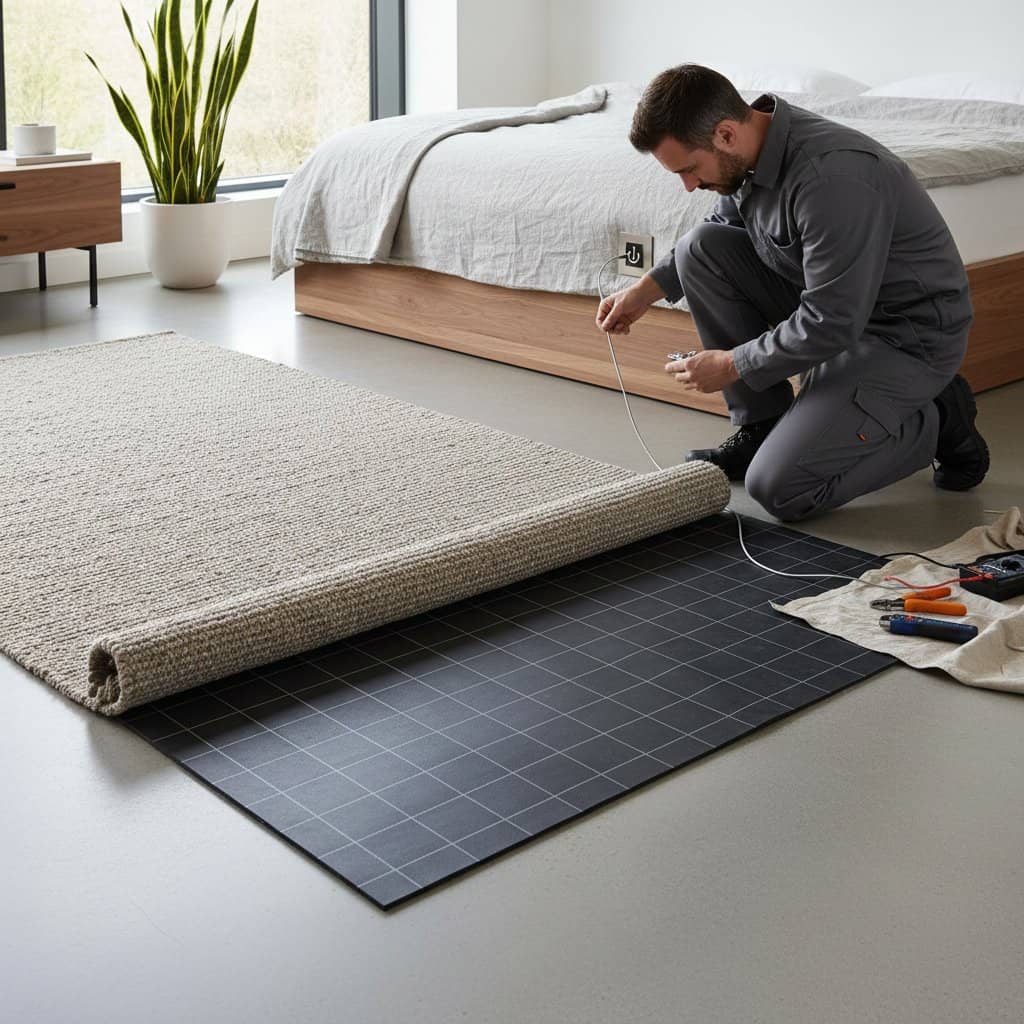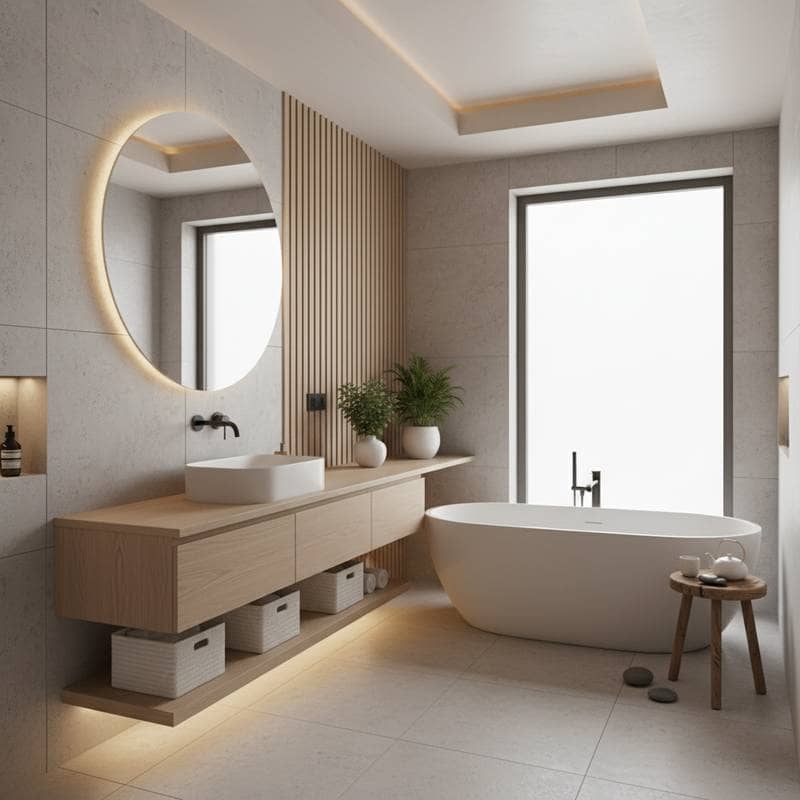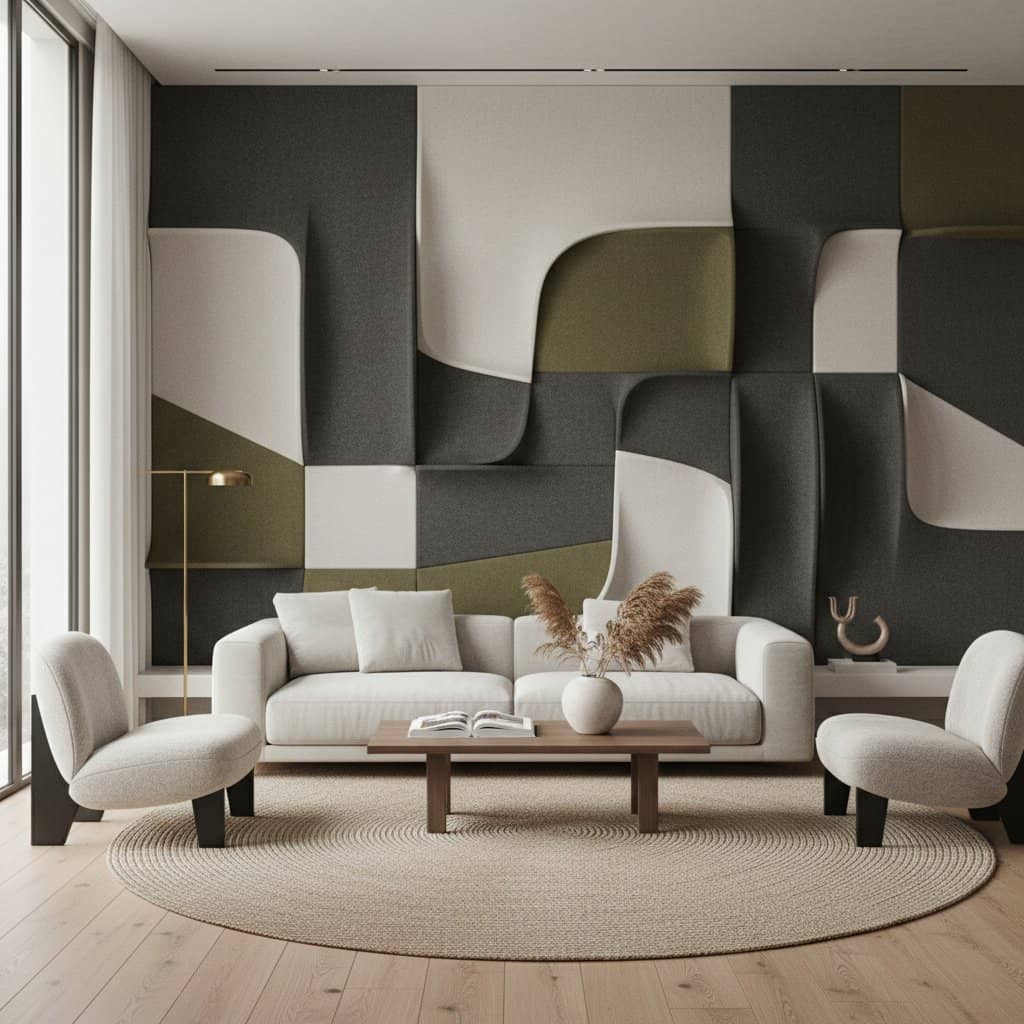Elevate Living Rooms with Artistic Acoustic Panels
Excessive noise in a living room disrupts comfort, even in spaces with impeccable decor. Hard surfaces such as bare walls, hardwood floors, and large windows reflect sound waves, causing echoes that make conversations strain and quiet moments feel intrusive. Artistic acoustic panels address this issue by absorbing excess sound while serving as striking visual elements. These panels transform ordinary walls into multifunctional features that promote balance and invite relaxation.
The Importance of Sound Control in Home Environments
Each living room possesses a unique acoustic profile influenced by its architecture and furnishings. High ceilings amplify voices, while minimal soft furnishings allow noise to reverberate unchecked. Residents often experience distorted audio from televisions or radios, or difficulty in focused listening during gatherings.
Effective sound management fosters tranquility. Panels reduce reverberation, resulting in clearer dialogue and subdued background noise. This adjustment subtly enhances the overall atmosphere, making the space more conducive to rest and interaction without drastic renovations.
Integrating Style and Acoustic Performance
Contemporary acoustic panels extend beyond utilitarian applications in recording studios or conference rooms. Interior designers now incorporate them as integral decorative components that harmonize with diverse interior schemes. Materials range from sustainable felt and cork to reclaimed wood and eco-friendly fabrics, available in configurations from modular grids to abstract sculptures.
These panels adapt effortlessly to various design preferences. In a Scandinavian-inspired setting, subtle grayscale options recede into the background for understated elegance. Vibrant, textured variants with metallic accents command attention in eclectic or modern spaces, ensuring that acoustic improvement complements rather than compromises visual harmony.
A Step-by-Step Guide to Implementation
Incorporating acoustic panels requires a methodical approach to maximize benefits without overwhelming the process. Begin by evaluating your space's needs and proceed with targeted selections. The following steps provide a clear framework for success.
-
Assess Acoustic Challenges
Observe the room during typical use. Clap sharply or stream ambient audio to identify areas of prolonged reverberation, such as alcoves or opposite walls from sound sources. -
Identify Key Placement Areas
Prioritize walls adjacent to primary seating or entertainment zones. Positioning panels behind couches or along sightlines to speakers yields the most immediate improvements in sound quality. -
Match Materials to Your Aesthetic
Select hues and finishes that align with dominant palette elements, like upholstery or wall colors. Opt for matte surfaces in low-light rooms to avoid glare, or glossy ones for added depth in brighter areas. -
Plan Dimensions and Arrangement
Calculate surface coverage based on room size; aim for 20 to 30 percent of wall area for optimal absorption. Use graph paper to plot asymmetrical or grid layouts that enhance artistic flow. -
Execute Secure Installation
Choose mounting methods suited to your setup, from command hooks for renters to recessed frames for permanence. Ensure level alignment with a laser tool for professional results. -
Evaluate and Refine Results
Test post-installation by replaying familiar media. Adjust panel positions if needed to fine-tune bass response or midrange clarity.
Addressing Potential Challenges
Concerns about aesthetics often deter adoption, yet panels can mimic gallery artworks when grouped creatively. Arrange three to five units in a triptych formation for visual impact without dominating the wall. For temporary solutions, freestanding floor panels or peel-and-stick varieties preserve flexibility.
Cost considerations are valid, but entry-level options from sustainable sources start affordably. Invest in versatile sets that allow gradual expansion; initial placements near high-traffic areas deliver disproportionate value. Professional consultations remain optional, as manufacturer guides simplify the process for DIY enthusiasts.
Infusing Warmth and Individuality
Acoustic panels contribute more than noise reduction; they enrich the sensory experience of a room. Plush fabrics and layered constructions introduce tactile softness that counters the sterility of hard acoustics. As echoes diminish, the environment encourages deeper connections, from intimate discussions to immersive entertainment.
Enhance this effect through complementary accents. Drape textured linens over furniture, introduce diffused lighting, or incorporate greenery for organic contrast. These additions amplify the panels' role in crafting a nurturing, personalized sanctuary that evolves with daily life.
Sustaining and Adapting Your Acoustic Setup
After installation, monitor how the living room's dynamics shift over time. Enhanced audio fidelity makes streaming sessions more engaging, while reduced noise supports better concentration during reading or reflection. The panels' efficacy persists with routine maintenance, such as gentle vacuuming to preserve absorption properties.
Periodically rearrange elements to maintain freshness. Rotate panel orientations seasonally or align them with thematic updates, like warmer tones for winter. This adaptability ensures the design remains relevant and responsive to changing needs.
Cultivating Ongoing Acoustic Awareness
Refining home acoustics encourages mindful stewardship of your environment. Regular auditory check-ins reveal how adjustments influence well-being, from invigorating daily routines to harmonious social occasions. Dedicate time weekly to sensory evaluations, tweaking arrangements for sustained harmony.
Each refinement builds cumulative comfort. Embrace this practice as an investment in a home that nurtures both body and mind, yielding enduring serenity through attentive design.



